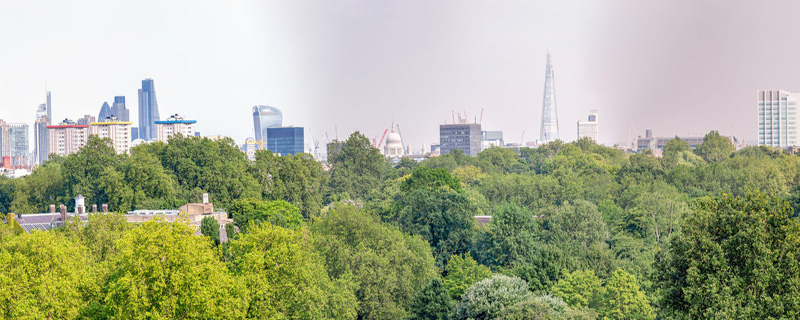How Green is Green Belt?
Time for some belt loosening
Much of the green belt is wrongly classified — the rules hinder planning decisions that could address the housing shortage
Mortgage interest rates are still creeping up, inflation remains stubbornly high and cost-of-living pressures continue to impact us all.
Mortgage lending to first-time buyers has fallen to the lowest level since the start of the pandemic — an indication that more and more aspiring owners are really struggling to buy a home of their own.
Housing has never been less affordable, and today’s young people are less likely to be homeowners than any generation since the 1930s.
Almost 60% of local authorities in England now have designated green-belt land
In our own research, 49% of young people said they doubted they would ever be able to own a home. Worryingly, homeownership for 25- to 34-year-olds has fallen from 70% in the 1990s to just 40% today.
Crippling lack of supply
Although there are many reasons for house price growth and unaffordability issues, clearly the underlying cause of our housing crisis is the chronic shortage of new homes.
Over the past 25 years the population of the UK has risen by around 10 million, but we have continued to build fewer homes than ever. Just over one million new homes were built in the 2010s compared to more than 3.5 million in the 1960s.
Despite conjuring images of our ‘green and pleasant land’, the truth is that much of the green belt is neither green nor pleasant
The lack of availability and high cost of land create one of the most significant, long-term barriers to building more homes of the right size and quality — and at affordable prices.
UK planning policy is notoriously contentious but we must find ways to address the crippling lack of supply.
That’s why we urgently need serious reform of our planning system, including having a proper conversation about the green belt.
Fresh air, green fields
The current UK green-belt guidelines were introduced more than 70 years ago and were designed to prevent urban sprawl. The concept of a ‘green belt’ evolved from the garden city movement, founded by urban planner Ebenezer Howard.
What’s very clear is that much more needs to be done to help young people onto the housing ladder
Howard wanted to create a ring of land around “cities polluted by the Industrial Revolution” so that workers would have access to fresh air and green fields.
A successful crusade by the Campaign to Protect Rural England led to an Act of Parliament in 1938 and the creation of the first green belts, around London and Sheffield.
Almost 60% of local authorities in England now have designated green-belt land. Due to this legislation, more than 12% of England’s land has the highest level of protection against development and can be built on only in exceptional circumstances.
UK planning policy is notoriously contentious but we must find ways to address the crippling lack of supply
Despite conjuring images of our ‘green and pleasant land’, the truth is that much of the green belt is neither green nor pleasant, and the rules now hinder many planning decisions.
Recent research has shown that a lot of the green belt has been wrongly classified and is just a buffer between urban sprawl and the countryside.
That’s why, in a House of Commons debate on delivering new homes at the beginning of June, Conservative MP Simon Clarke argued for areas of green belt that did not have genuine environmental value to be redesignated as ‘amber belt’.
Political agenda
As we approach the run-up to the next general election, housing issues are, quite rightly, shooting up the political agenda.
The opposition Labour party says it will ‘back the builders, not the blockers’ and has announced several changes to shake up planning rules. Meanwhile, the Conservative government suggested it might be looking for a Help to Buy style solution to drive housebuilding and help first-time buyers.
Homeownership for 25- to 34-year-olds has fallen from 70% in the 1990s to just 40% today
However, what’s very clear is that much more needs to be done to help young people onto the housing ladder.
The facts remain bleak. It is now the hardest time to afford a home since our founding year in 1875 — a sad reflection of decades of inaction to tackle the UK’s housing crisis.
Source: Mortgage Strategy







Leave a Reply
Want to join the discussion?Feel free to contribute!